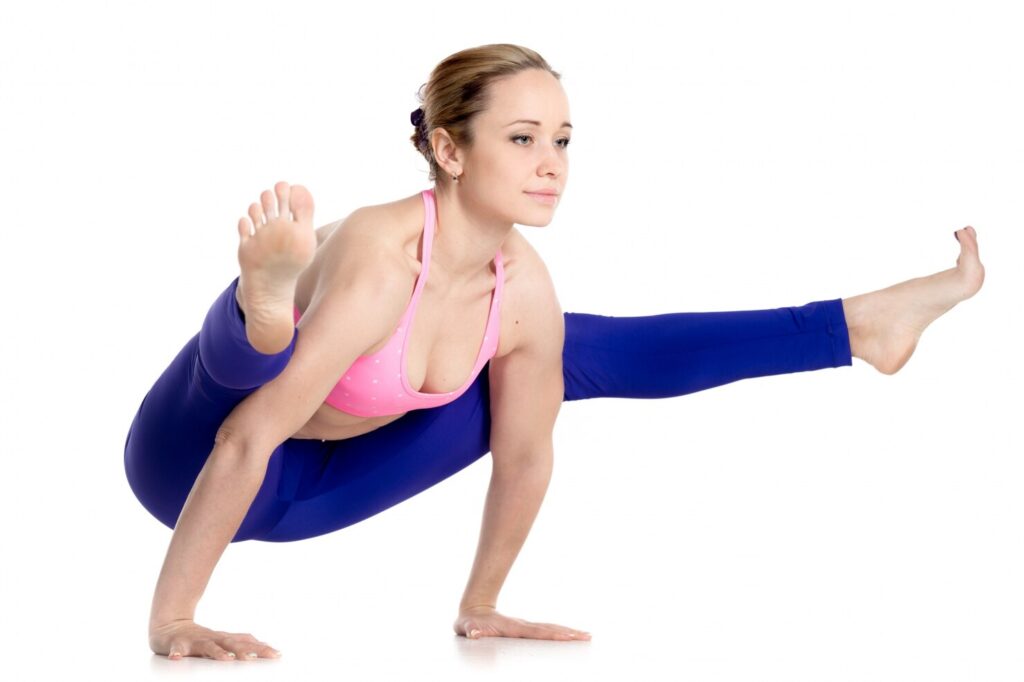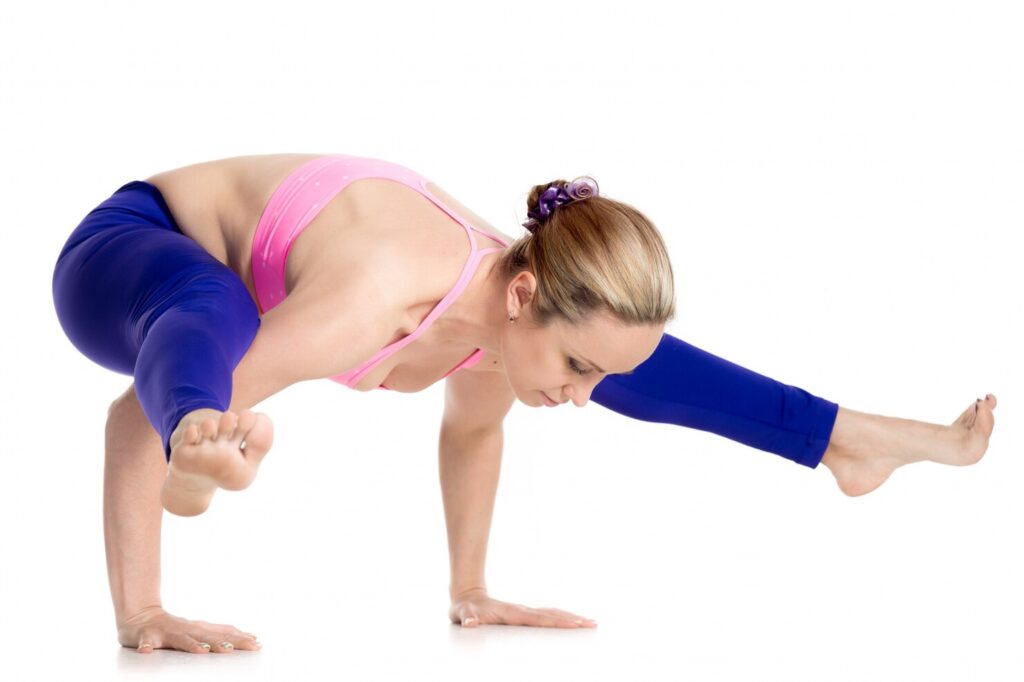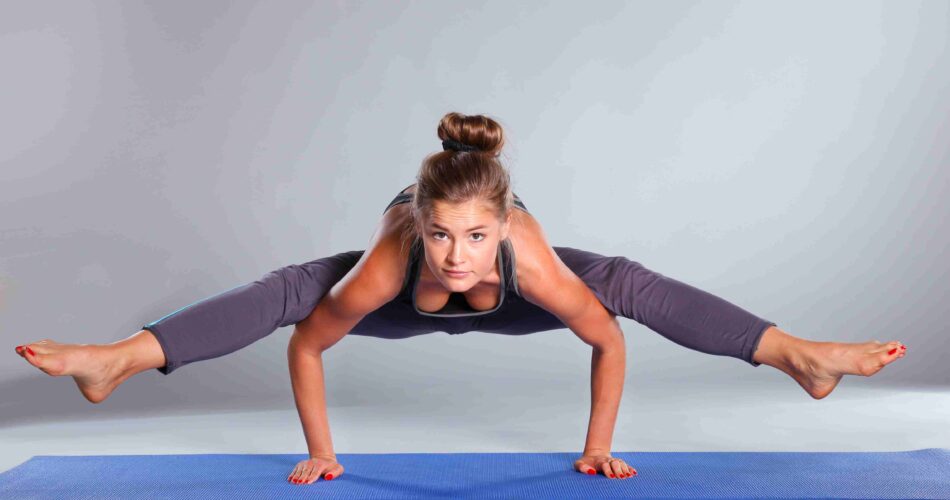Tittabhasana: Mantis pose
Among the asanas, the mantis pose in hatha yoga hasn’t had much luck because by changing one letter in the word “tittabhasana” and turning it into “tittibhasana” It became known as firefly pose. There are other variants of the name of this asana: chibisa and small water bird. The original variant was performed lying prone, with the hands holding the thumbs with the legs spread wide apart. Later the exercise was performed with hands.

Benefits of Tittabhasana
The mantis pose in hatha yoga is one of those poses that are connected with the preservation of balance. To perform it, you need a good level of flexibility and stretching and an excellent command of the body. Although it is not one of the most difficult asanas, we do not recommend beginners to try it until they have a certain level of fitness. The pose looks like this: a person is standing on his hands, with his legs stretched upward.
The benefit of this body position is that all the muscles and bones of the skeleton become stronger. Since the emphasis is on the arms, the wrists are especially strengthened and the arms become stronger. Since this is a balance exercise, it develops a sense of balance, improves the vestibular apparatus, a person becomes more self-confident. Tension of the whole body stimulates all abdominal organs.
Asana technique
1. Start the exercise with the basic pose of the Mountain.
2. Then you should squat and, bending as low as possible, unbend your legs and raise your pelvis.
3. Put your hand behind your knee. Keep your palms pressed tight to the floor.
4. Continuing to press firmly palms to the mat, slowly start to transfer the body weight on your hands. Feet are gradually pulled away from the floor.
5. As you exhale, straighten your legs as much as possible and try to squeeze your hands together.
6. Slowly straighten your arms.
7. To keep your balance, you need to distribute the weight evenly between the edges of your palms. Make sure that the weight is not shifted to the outer parts of the hands, so try to press the bases of the thumbs and index fingers to the floor.

Possible errors in Tittabhasana
The following mistakes are possible during the exercise:
1. The forward tilt is not low enough at the beginning of the exercise. This does not allow to continue the exercise properly.
2. In the fourth stage, the arms are not close enough to the shoulders. This will be an obstacle to the normal transfer of body weight to the arms.
At the seventh stage, the bases of the thumbs and index fingers are not pressed enough to the floor, so the weight is shifted to the outer parts of the hands, which will not allow you to hold the asana for the necessary time.



Download the app and get 7 days free use
 eng
eng rus
rus deu
deu esp
esp fra
fra ita
ita por
por srp
srp tur
tur ukr
ukr

